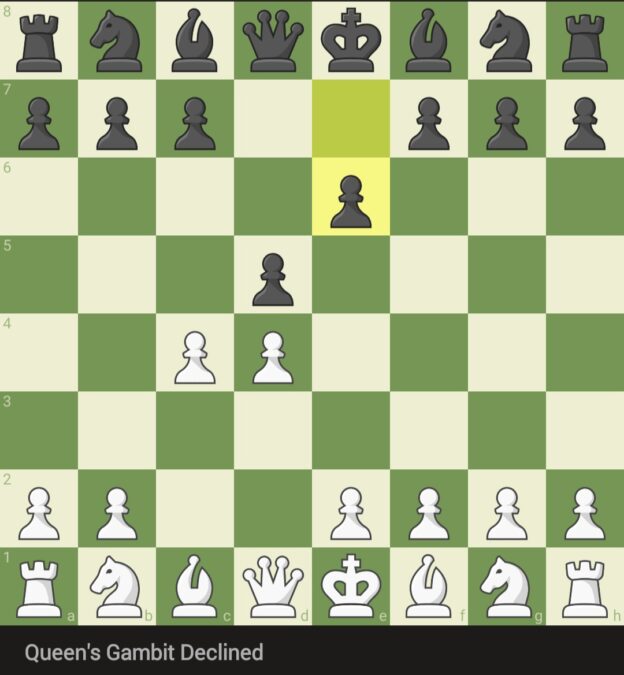In the vast expanse of chess openings, one stands as an emblem of solidity and strategic depth: the Queen’s Gambit Declined. This venerable defence has been cherished by generations of chess players for its ability to create an impregnable fortress, withstand the test of time, and pave the way for intricate battles of strategy. This essay delves into the history, principles, and enduring appeal of the Queen’s Gambit Declined.
Historical Origins:
The Queen’s Gambit Declined, often abbreviated as QGD, finds its roots in the 19th century. Its name stems from the gambit, where White offers a pawn on d4, which Black usually declines by maintaining pawn structure with dxc4. As the game of chess evolved and theory developed, the QGD emerged as a cornerstone of classical chess openings, championed by players seeking solidity and positional advantages.
Key Moves and Variations:
The Queen’s Gambit Declined arises after the opening moves 1.d4 d5 2.c4 e6. Black’s e6 move signals the intention to maintain a strong pawn structure, emphasizing control of the center. This defense can lead to several subvariations, including the Orthodox Defense, Lasker Defense, and Tartakower-Makagonov-Bondarevsky System, each with distinct strategic ideas and nuances.
Principles and Characteristics:
- Pawn Structure and Central Control: The hallmark of the Queen’s Gambit Declined is the robust central pawn structure. Black’s pawn duo on d5 and e6 provides a solid foundation, restricting White’s pawn breaks and central control. This structure creates a resilient position from which to launch counterattacks.
- Piece Development: Black often prioritizes piece development and king safety over rapid pawn advancement. The bishop on f8 is frequently fianchettoed to g7, and the queen’s knight is developed to f6 or e7, maintaining a harmonious setup.
- Strategic Complexity: The Queen’s Gambit Declined is renowned for its strategic complexity. The games often transition into positions with subtle maneuvering, pawn breaks, and piece coordination. Mastery of this opening requires a deep understanding of pawn structures, positional play, and endgame principles.
Enduring Relevance:
The Queen’s Gambit Declined enjoys enduring relevance in modern chess. It remains a preferred choice for elite grandmasters and club players alike due to its reliability and capacity to withstand aggressive assaults. Its rich theoretical heritage ensures a wealth of resources and novelties, making it a fertile ground for creative play.
Famous Practitioners:
Throughout its history, the Queen’s Gambit Declined has been championed by many of the world’s greatest players. Legendary figures such as Anatoly Karpov and World Chess Champions Jose Capablanca and Anatoly Karpov have showcased its power and resilience on the grandest stages of chess.
Conclusion:
The Queen’s Gambit Declined stands as a testament to the enduring allure of classical chess openings. Its unwavering emphasis on pawn structure, central control, and strategic depth has earned it a cherished place in the hearts of chess players. Beyond the battles on the board, it is a symbol of resilience and the enduring capacity of human intellect to forge unbreakable fortresses in the quest for victory. In the ever-evolving landscape of chess, the Queen’s Gambit Declined remains a beacon of stability and strategic brilliance.
